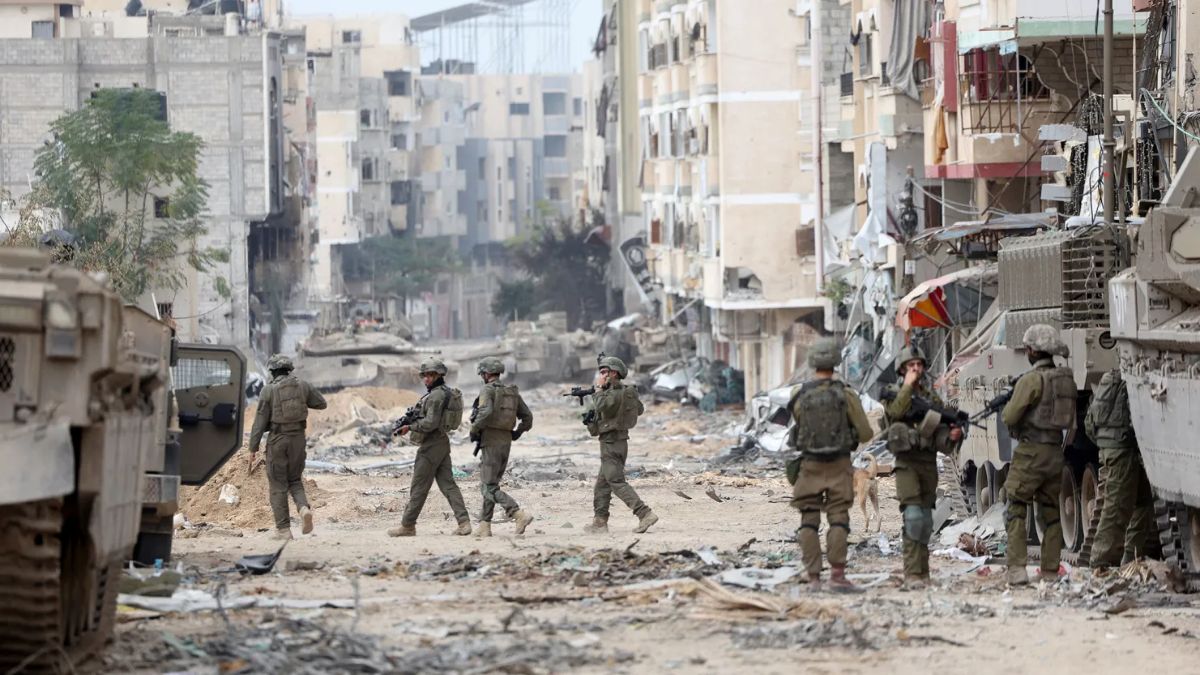US President Joe Biden has said that Israel and Hamas are “on the brink” of a deal for a ceasefire in the Gaza Strip and release of hostages held by terrorists.
For more than a year, the Biden administration of the United States has been working with mediators Qatar and Egypt to secure a deal to end the war in Gaza.
While the specifics of the deal on the table have not been made public, the deal is expected to be either the same or largely same as the proposal announced by Biden last year . While Israeli Prime Minister Benjamin Netanyahu endorsed it at the time, he added new demands months later that stalled talks for months . Later, Hamas returned to serious negotiations after a series of military setbacks, assassination of top leaders, and weakening of its allies Iran and Hezbollah.
While the timeline is not clear, it is expected that a deal could be signed by the end of the week. Israeli negotiators led by Mossad chief David Barnea are in Qatari capital Doha for the final leg negotiations that are set to resume on Tuesday.
There are indications that Israel has walked back on some of its key demands, such as continued occupation of large swathes of Gaza, to make way for the deal. The incoming Donald Trump administration of the United States has been part of efforts to secure the deal.
Trump has said there has been a “handshake” between Israel and Hamas and the deal is expected by the end of the week.
Once the deal is reached, the Israeli Cabinet would need to approve it and, if petitions are filed in the Supreme Court against the deal, then the court would need to process and reject those petitions, according to The Jerusalem Post.
Impact Shorts
More ShortsOnce the Cabinet approval and Supreme Court ruling have come, “the first hostages could be released fairly quickly”, said one source to the newspaper.
Israel-Hamas deal ‘on brink of coming to fruition’, says Biden
Outgoing US President Biden on Monday said that the deal between Israel and Hamas is “on the brink of coming to fruition”.
Biden said that his administration was “working urgently” to secure the deal.
Earlier on Monday, US Secretary of State Antony Blinken said a deal was “closer than we’ve ever been” and the Biden administration was “very hopeful that we get it over the finish line, finally, after all this time”.
Separately, outgoing National Security Advisor Jake Sullivan said that negotiations are at a stage where a deal could be finally made and that there is active coordination between the outgoing and incoming administrations.
“But I do believe that the consequence of all of that degradation is that we are finally at the point, both from Israel’s perspective and Hamas’s, where a deal could come together…We are coordinating closely with the incoming administration to make maximum use of this particular period to get this thing done,” said Sullivan.
What we know of Israel-Hamas deal?
By all accounts, the deal on the table is either same or largely similar as the one outlined by Biden in May 2024.
The three-stage deal would start with a six-week ceasefire that would see the release of hostages in the humanitarian category comprising the elderly, women, injured, etc.
The Jerusalem Post has reported sources as saying that 33 hostages would be released in the first phase of the deal accompanied by the starting of Israeli military’s withdrawal from Gaza.
On the 16th day of the ceasefire, talks to reach the next stage of the deal would start in which all hostages would be released and the Israeli military withdrawal would be completed, according to sources.
While sources did not provide a timeline, they said the first stage would not extend beyond stipulated 42 days.
Sources further said that the Israeli military would not fully withdraw from Gaza until all hostages have been released.
After the first stage of the deal, Israeli soldiers would only stay in select places Gaza and, once the deal is completed, Israel would only implement a security parameter around Gaza and not occupy it, according to sources.
All indications were that the Israeli military would withdraw from the so-called Netzarim Corridor dividing Gaza into northern and southern halves , according to The Post.
The newspaper further reported that there would be unspecified ‘security arrangements’ to review displaced Gazans return to the north from southern parts where they have been sheltering.
)